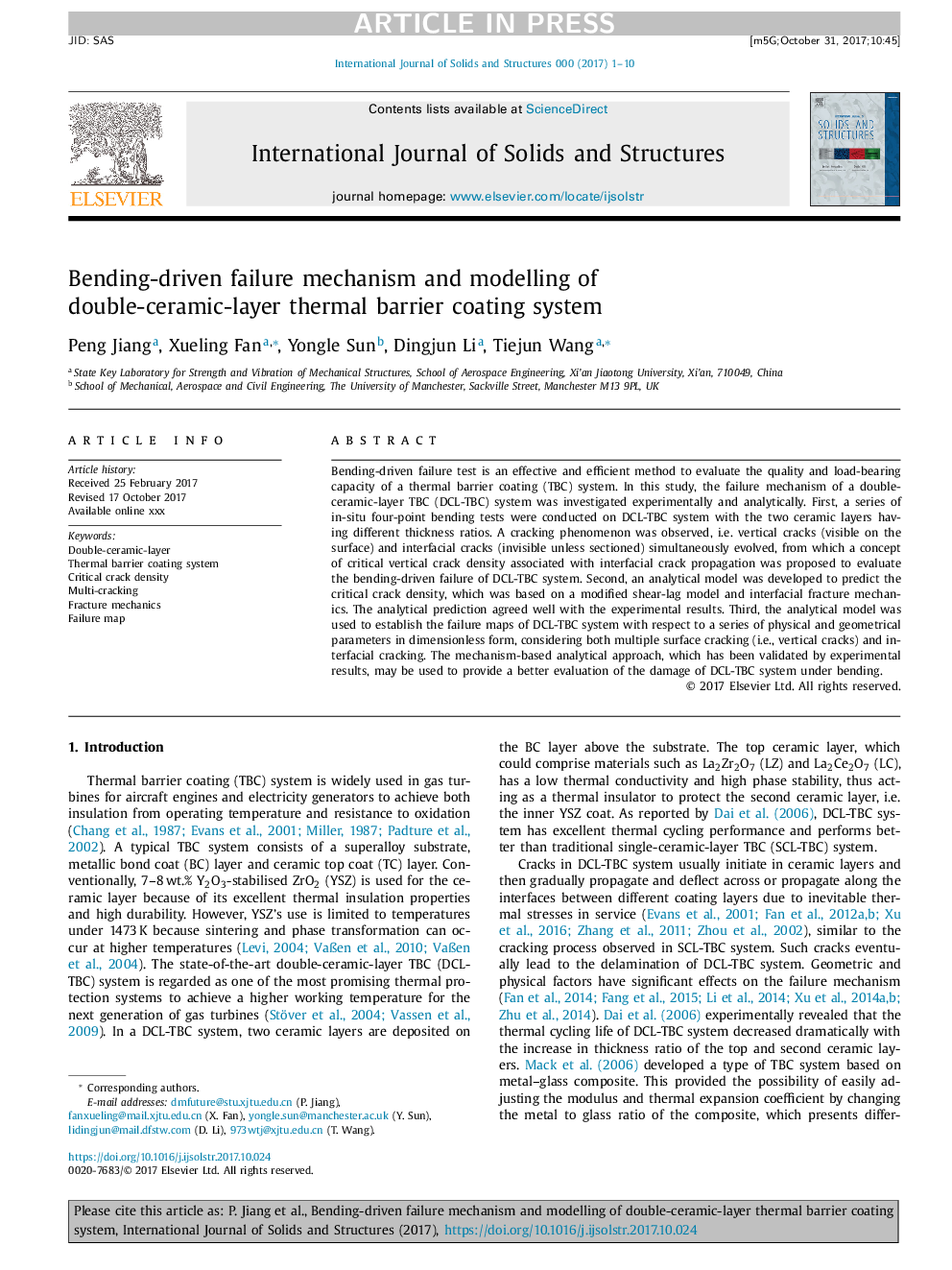| Article ID | Journal | Published Year | Pages | File Type |
|---|---|---|---|---|
| 6748473 | International Journal of Solids and Structures | 2018 | 10 Pages |
Abstract
Bending-driven failure test is an effective and efficient method to evaluate the quality and load-bearing capacity of a thermal barrier coating (TBC) system. In this study, the failure mechanism of a double-ceramic-layer TBC (DCL-TBC) system was investigated experimentally and analytically. First, a series of in-situ four-point bending tests were conducted on DCL-TBC system with the two ceramic layers having different thickness ratios. A cracking phenomenon was observed, i.e. vertical cracks (visible on the surface) and interfacial cracks (invisible unless sectioned) simultaneously evolved, from which a concept of critical vertical crack density associated with interfacial crack propagation was proposed to evaluate the bending-driven failure of DCL-TBC system. Second, an analytical model was developed to predict the critical crack density, which was based on a modified shear-lag model and interfacial fracture mechanics. The analytical prediction agreed well with the experimental results. Third, the analytical model was used to establish the failure maps of DCL-TBC system with respect to a series of physical and geometrical parameters in dimensionless form, considering both multiple surface cracking (i.e., vertical cracks) and interfacial cracking. The mechanism-based analytical approach, which has been validated by experimental results, may be used to provide a better evaluation of the damage of DCL-TBC system under bending.
Related Topics
Physical Sciences and Engineering
Engineering
Civil and Structural Engineering
Authors
Jiang Peng, Fan Xueling, Sun Yongle, Li Dingjun, Wang Tiejun,
